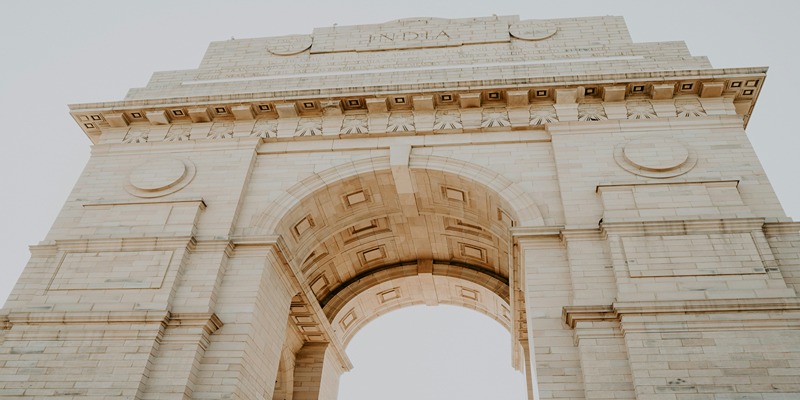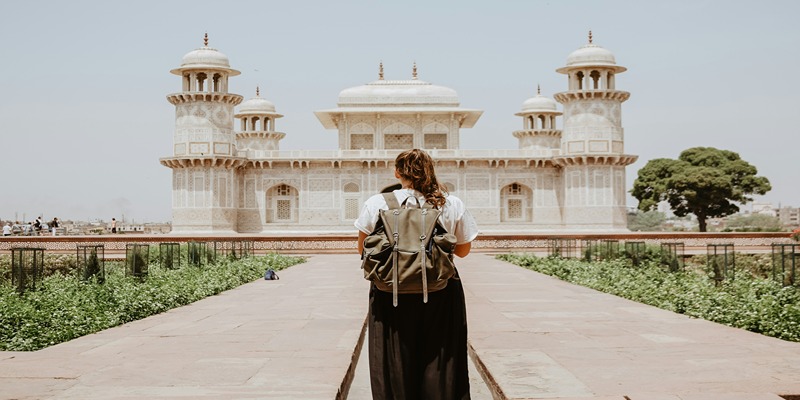Exploring India's Iconic Structures and Statues
Feb 08, 2024 By Juliana Daniel
Advertisement
The Indian landscape is the site of numerous architectural marvels and statues that tell of its glorious heritage and artistic feats. These beautiful structures spanning from ancient wonders to modern masterpieces are present in this dynamic nation with a rich history. India’s architectural heritage includes the elaborate temple complexes, palaces as well as colonial buildings – all as diverse as Indian culture. Its statues are also of various heights from colossal figures representing unity and power to small yet important sculptures that showcase historical and mythical beings. Taken together, these two sets of pictures depict a picture of India’s cultural and historical evolution that beckons the viewer into a visual expedition of this beautiful country.

Famous Structures in India: Ancient to Modern
The Timeless Appeal of the Taj Mahal
Commemorating the late beloved wife of Emperor Shah Jahan Mumtaz Mahal, this ivory-white marble mausoleum is recognized for the elaborate craftsmanship and the Persian and Mughal architecture. The elegance of the building is mirrored in the perfectly symmetrical gardens as well as the reflective pool that reflects the beauty of the building in itself, making it one of the greatest pieces of architectural beauty and a symbol of love until the end of time.
Architectural Splendor of Qutub Minar
An early example of Indo-Islamic architecture, the Qutub Minar is a towering minaret which rears up from the plains of Delhi. Built in the 12 th century it is a part of the complex of Qutub which includes several more historical buildings. The minaret is about 73 meters tall and carved with beautiful verses from the Quran. It is not only by the height that the structure is significant but by the way it was built and the first-ever innovations it brought with it, such as a fusion of Islamic and Hindu designs.
Modern Marvels: Lotus Temple and Howrah Bridge
Contrastingly, the marvels of modern India in the architectural world such as the Lotus Temple in New Delhi and the Howrah Bridge in Kolkata reflect the spirit of the contemporary and dynamic India. Another remarkable House of Worship is the Lotus Temple, which is best known for its nine-sided design and a magnificent central hall in a flower-like form. The Howrah Bridge is an architectural marvel that spans over the Hooghly River and comprises an engineering wonder of a cantilever bridge with both functionality and beauty in it. These new age buildings do not only represent the advances in technology, but also demonstrate the Indian ability to merge the contemporary and the old in its urban space.
India’s Landmarks: Symbolic and Historic Significance
The Red Fort: A Symbol of India’s Rich History
The Red Fort in Delhi stands for more than just the historic fortress; it signifies the stormy yet hectic era of India’s past. The majestic monument in red sandstones, which dominates the skyline, was constructed by Mughal Emperor Shah Jahan in the 17th century and has witnessed many of the major historical events in India’s history, including the fight for independence. The style of architecture of the fort is an amalgamation of Persian, Timurid, and Indian elements, which ultimately reached the pinnacle of Mughal imagination. It is the site where today India’s Independence Day celebrations take place, which stands for the nation’s independence and perpetual power.
Mysore Palace: A Testament to Royal Grandeur
A magnificent Indo-Saracenic masterpiece, Mysore Palace stands at the center of the city of Mysore. This palace, the palace of the Wadiyar Maharajas, is noted for its luxurious and detailed interior design, including Ambavilasa hall, decorated by gilded columns and stained glass. The palace, which is brightened by thousands of lamps on festive occasions, reflects the elegance of royal legacy and is an important symbol of regional or cultural heritage and history.
The Sun Temple at Konark: A Heritage of Ancient Artistry
The marvel of the Sun Temple in Konark, Odisha is a glorious tribute to the ancient Indian artistry and engineering acumen. The highly sophisticated chariot built for the Sun God is constructed in huge size with stone wheels, pillars and walls carved out in an exquisite fashion and it represents the zenith of Kalinga architecture. This architectural monument which was constructed in the 13th century and is now a UNESCO World Heritage Site, represents these ancient Indian astronomers and architects exquisite knowledge with an engineering style that makes it seemingly magically aligned to the rays of the sun.

Iconic Statues: Celebrating India's Cultural Diversity
The Statue of Unity: A Modern Colossus
Backed by the Satpura and Vindhya ranges in Gujarat, the Statue of Unity is a homage to Sardar Vallabhbhai Patel, an important political leader and a major player in the freedom of India and the reunification of the country. It is 182 meters in height and it is the world's tallest statue. Built as a symbol of national unity, this contemporary architectural marvel is not only made of special bricks and light weight amalgam, but also provides a scenic view over the surrounding landscape and the Narmada River. It is a perfect embodiment of India’s architectural abilities as well as the skill of combining art and engineering.
Thiruvalluvar Statue: A Tribute to Tamil Culture
The Thiruvalluvar Statue, created as a tribute to the native Tamil poet and philosopher, Thiruvalluvar, is perched on the shores of the Indian Ocean in Kanyakumari. This 133 feet high statue is a representation of the 133 chapters of his famous chapter, Thirukkural. The statue, embodied with elaborate detail, symbolizes the vibrant literature and art culture of Tamil Nadu. It is a shining example, which stands as a testimony to the role the poet has played in the field of ethics, morality, and philosophy.
Conclusion
India’s grandeur in architecture and art is revealed through its great structures and figures that serve as a passage to the past and culture. The Taj Mahal and the Statue of Unity stand as timeless architectural achievements. They are not only testaments to the sights of India but also the richness of its heritage. They all have their respective stories to tell referring to the nation’s rich history, cultural diversity, and artistic ingenuity. In this way, visiting these iconic places is a breathtaking experience of India’s legacy and the multifaceted canvas of civilizations.
Advertisement







